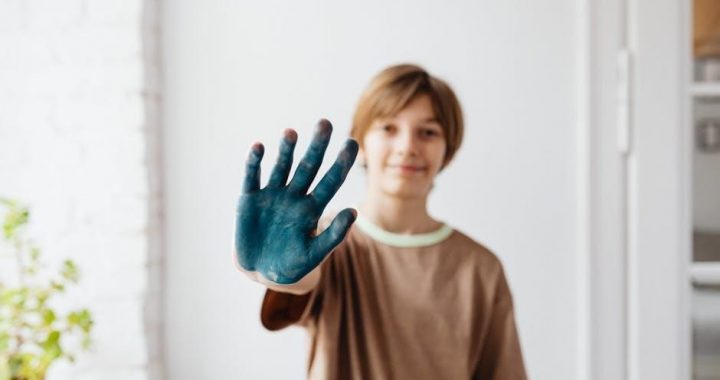Dylon Hand Dye offers a versatile solution for dyeing smaller items and delicate fabrics. Available in a wide range of colors, it simplifies the dyeing process.
What is Dylon Hand Dye?
Dylon Hand Dye is a high-quality fabric dye designed for manual application, ideal for smaller items and delicate fabrics. It is available in a wide range of vibrant colors, making it perfect for refreshing old clothes, upcycling home furnishings, or creating unique DIY projects. Unlike machine dyes, Dylon Hand Dye is specifically formulated for hand use, allowing precise control over the dyeing process. It is suitable for natural fabrics like cotton, linen, and silk, but not for synthetic materials. The dye is easy to mix and apply, offering a fun and creative way to transform textiles. It is a popular choice for crafters and DIY enthusiasts.
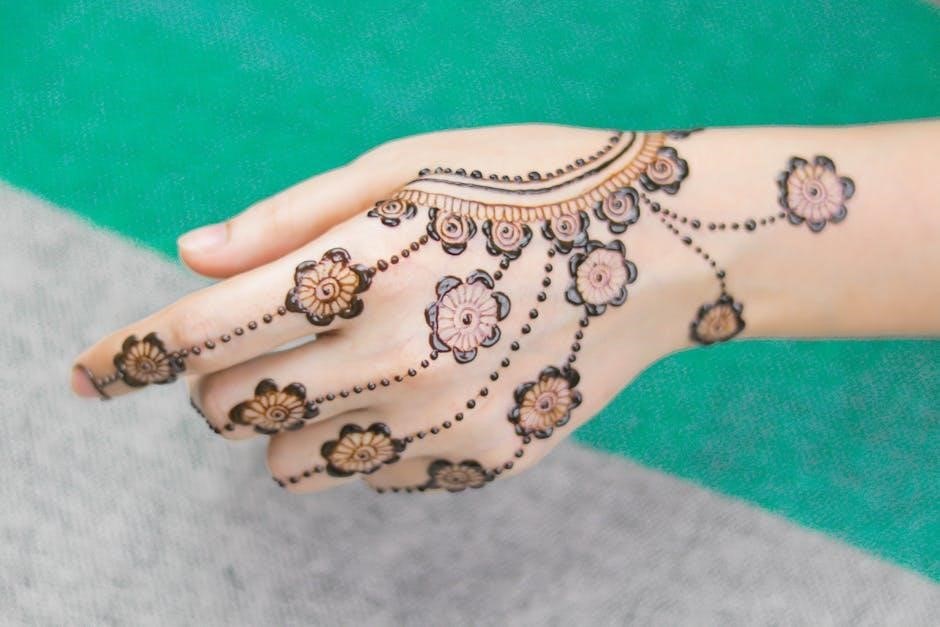
Benefits of Using Dylon Hand Dye
Dylon Hand Dye offers precise control over the dyeing process, making it ideal for smaller or delicate items. Its versatility allows for vibrant color customization, perfect for refreshing old clothes or upcycling home furnishings. Suitable for natural fabrics like cotton, linen, and silk, it ensures durable, long-lasting results. The dye is user-friendly, with clear instructions for achieving professional-quality finishes. It’s also environmentally friendly, extending the life of fabrics and reducing waste. Whether for crafting or revitalizing wardrobe staples, Dylon Hand Dye provides an easy, creative solution for transforming textiles with minimal effort and maximum impact.
Preparing for the Dyeing Process
Start by washing and weighing the fabric while damp. Use rubber gloves to dissolve the dye in 500ml of warm water. Protect your workspace with covers.
Suitable Fabrics for Dylon Hand Dye
Dylon Hand Dye works best on natural fabrics like cotton, linen, viscose, wool, and silk. Synthetic fibers, such as nylon or polyester, may not absorb the dye effectively. Ensure fabrics are made from at least 80% natural fibers for optimal results. Avoid dyeing synthetic blends or fabrics with special finishes. Always check the care label to confirm fabric suitability. Natural fibers allow the dye to bind properly, ensuring vibrant and long-lasting color. Synthetic fabrics may not yield desired results, as the dye struggles to adhere. For delicate materials, hand dyeing is a gentle and effective method.
Measuring and Weighing the Fabric
Accurate measurement and weighing are crucial for successful dyeing. Start by weighing the dry fabric using a scale to determine the correct dye quantity. Dylon Hand Dye typically requires 1 sachet per 250g of fabric. For larger items, adjust the dye proportionally. Ensure the fabric is clean and dry before weighing. Record the weight to avoid errors during the dye preparation. Proper measurement ensures even color distribution and prevents under or over-dyeing. This step is essential for achieving professional-looking results. Always follow the guidelines provided with the dye for precise calculations. Measuring and weighing are the foundation of a successful dyeing process.
Washing and Preparing the Fabric
Before dyeing, wash the fabric thoroughly in warm water using a mild detergent to remove dirt, oils, and finishes. This ensures the dye adheres evenly. Do not use fabric softener, as it can repel the dye. Rinse the fabric well and leave it damp, as dry fabric may not absorb the dye properly. For natural fibers like cotton or linen, dampness helps the dye penetrate evenly. Gently squeeze out excess water but avoid wringing, as this could stretch or damage the fabric. Properly prepared fabric is essential for achieving vibrant, long-lasting color. This step sets the foundation for a successful dyeing process.
Protecting Your Workspace
Protecting your workspace is crucial to avoid stains and damage. Cover your work area with newspaper, plastic sheets, or a drop cloth to prevent dye spills from damaging surfaces. Wear rubber gloves to protect your hands from stains and potential skin irritation. old clothing or an apron can also shield your clothes from accidental splatters. Ensure good ventilation to avoid inhaling dye fumes. Keep cleaning supplies nearby, such as paper towels or a damp cloth, to quickly address any spills. Protecting your workspace not only makes cleanup easier but also ensures a safer and more enjoyable dyeing experience. Proper preparation prevents long-term damage and mess.
The Dyeing Process
The dyeing process involves dissolving the dye in warm water, adding salt, and immersing the fabric. Stir gently and monitor until the color is evenly absorbed, wearing rubber gloves.
Mixing the Dye
Mixing the dye is a crucial step that requires attention to detail. Start by dissolving the Dylon Hand Dye powder in 500ml of warm water using rubber gloves to protect your hands. Ensure the powder is fully dissolved to achieve an even color. Avoid inhaling the dye particles, and work in a well-ventilated area. Once the dye is completely dissolved, it can be added to the dye bath. Always follow the instructions on the packaging for the correct measurements and safety precautions to achieve the best results and avoid any potential risks.
Creating the Dye Bath
Fill a large bowl or stainless steel sink with approximately 6 liters of warm water (around 40°C). Add 250g of salt to the water and stir until fully dissolved. This helps the dye bind evenly to the fabric. Once the salt is dissolved, slowly pour in the pre-mixed dye solution while gently stirring the water to ensure an even distribution. Make sure the water is not too hot, as this can affect the dye’s consistency. Use rubber gloves to protect your hands during this process. The dye bath is now ready for immersing your fabric.
Immersing the Fabric
Once the dye bath is prepared, carefully submerge the damp fabric into the water, ensuring it is fully covered. Use your hands or a tool to gently agitate the fabric, making sure there are no wrinkles or air pockets. This helps the dye penetrate evenly. Stir the fabric gently for about 5-10 minutes to distribute the dye uniformly. Avoid vigorous stirring, as it may damage delicate materials. Allow the fabric to soak in the dye bath for the recommended time, usually 30-45 minutes, depending on the desired intensity of the color. Keep the water warm but not boiling during this process.
Stirring and Monitoring the Dye
After immersing the fabric, stir gently but thoroughly to ensure the dye spreads evenly. Use a spoon or stick to agitate the mixture, especially around folds or thick areas. Stir periodically over 30-45 minutes to maintain even color distribution. Avoid letting the fabric rest too long in one position, as this can cause uneven dyeing. Monitor the color intensity and adjust soaking time if needed. Wearing rubber gloves, ensure consistent movement without over-stirring, which might damage delicate fabrics. Keep the water warm but not boiling to prevent color fading. Proper stirring and monitoring are key to achieving vibrant, professional-looking results with Dylon Hand Dye.
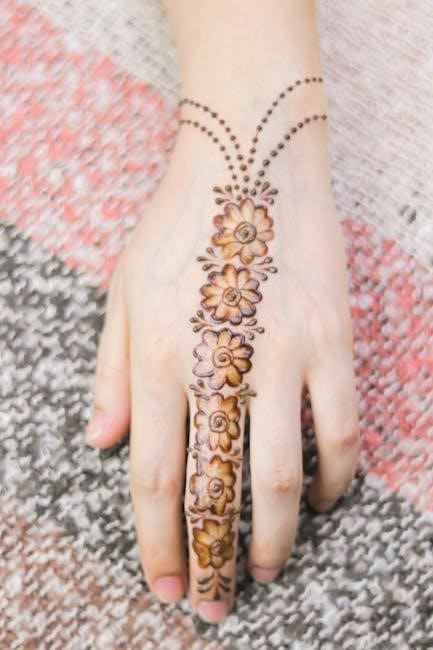
Special Techniques
Explore creative methods like shibori and tie-dye for unique patterns. Mix colors to achieve custom shades, enhancing your fabric’s appearance with innovative techniques and artistic flair.
Shibori and Tie-Dye Methods
Shibori and tie-dye are popular techniques for creating unique, hand-crafted patterns. To achieve these effects, fold or bind fabric before dyeing. For shibori, fold fabric into intricate designs, while tie-dye involves tying fabric into knots. Both methods require careful preparation to ensure distinct patterns. After folding or tying, submerge the fabric in the dye bath and allow it to soak. The tighter the folds or knots, the more resistance to dye penetration, resulting in striking, multi-tonal effects. These techniques add an artistic touch to your dyeing projects, making each piece truly one-of-a-kind. Follow Dylon instructions for best results.
Colour Mixing and Matching
Colour mixing and matching with Dylon Hand Dye allows for endless creativity. Start by understanding basic colour theory to blend hues effectively. To create custom shades, mix different Dylon dye powders in varying proportions before adding to the dye bath. For pastel tones, add less dye, while vibrant colours require more. Always test small fabric samples to ensure desired results. Consider the fabric type, as natural fibres absorb colour differently. Use rubber gloves to mix and handle dye safely. Experiment with layering techniques for multi-tonal effects. Proper measurement and gradual blending are key to achieving consistent, professional-looking colours. Follow Dylon’s guidelines for precise formulations.

Post-Dyeing Care
Rinse dyed fabric thoroughly with cold water until excess dye is removed. Wash separately in cold water with mild detergent. Avoid direct sunlight for drying.
Rinsing and Washing the Fabric
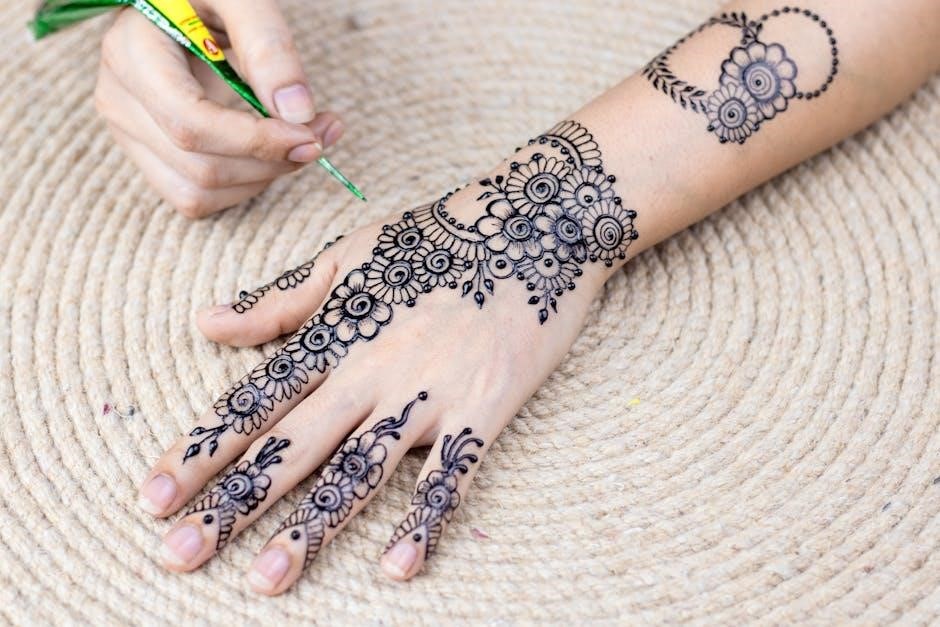
After dyeing, rinse fabric gently in cold water to remove excess dye. Use mild detergent and cold water for the first wash to prevent color fading. Avoid soaking or scrubbing. For delicate items, consider hand washing. Always rinse thoroughly to ensure no residual dye remains. This helps maintain color vibrancy and prevents staining other fabrics. Regular washing thereafter can be done with similar colors to preserve the dye. Proper care ensures long-lasting results and keeps fabrics looking their best.
Drying and Caring for Dyed Fabrics
Allow dyed fabrics to air dry away from direct sunlight to prevent fading. Reshape items while damp to maintain their original form. For delicate fabrics, lay flat to dry instead of hanging. Once dry, wash dyed fabrics separately in cold water with a mild detergent to protect the color. Avoid using bleach or harsh chemicals, as they can damage the dye. Iron dyed fabrics inside out on a low heat setting to prevent color transfer. Proper care ensures the dye remains vibrant and the fabric stays in good condition. Regular maintenance will extend the life of your dyed items.

Common Mistakes and Tips
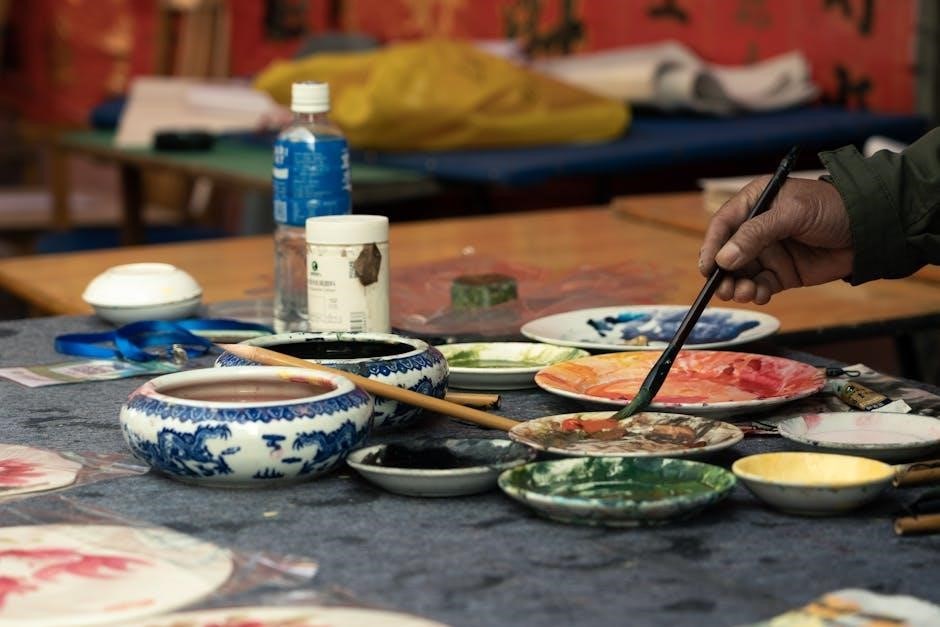
Wearing gloves prevents skin staining, and dissolving dye thoroughly ensures even color. Follow instructions carefully to achieve the best results with Dylon Hand Dye.
avoiding Colour Fading
To prevent colour fading when using Dylon Hand Dye, ensure the fabric is washed thoroughly before dyeing to remove dirt and finishes that might affect colour retention. Using the recommended amount of dye and salt helps achieve vibrant, long-lasting colours. Avoid soaking dyed fabrics in direct sunlight, as UV rays can cause fading. Washing dyed items in cold water and turning them inside out before washing can also help preserve the colour. Following the instructions carefully and using high-quality dye ensures the best results and minimizes fading over time.
Troubleshooting Common Issues
Common issues with Dylon Hand Dye include uneven colour, weak shades, or excessive fading. Uneven colour may result from insufficient stirring or improper fabric preparation. To fix this, ensure the fabric is evenly immersed and stirred frequently during the dyeing process. Weak colour can occur if too much water is used or if the dye is not fully dissolved. Adding the correct amount of salt and ensuring the dye is properly mixed can help achieve vibrant results. Colour fading can be minimized by washing dyed fabrics in cold water and avoiding direct sunlight. Always follow the instructions carefully to avoid these issues and achieve professional-looking results.
